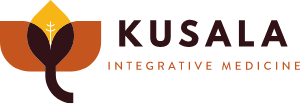This page is for informational and educational purposes only. Kusala Integrative Medicine LLC is not currently offering acupuncture services.

Healing and Daoism
Many healing practitioners worldwide refrain from methods used in Western medicine in favor of those that provide a different angle on human wellness. Thanks to it, they can better understand the complexities of the human body, its mind, and corresponding spiritual landscapes.
Two healing systems that stand out in this regard are Ayurveda and Classical Chinese Medicine. They avoid the Western, materialistic approach to spiritual healing. Instead, they offer unique solutions that allow the patient to connect with their source of spiritual power and dedicate it to their recovery and awareness without worrying about anything else going on in the world.
These healing modalities can benefit one’s physical and spiritual well-being by supporting a deeper body-mind connection and a profound state of relaxation. Furthermore, they may serve as something much more significant, becoming the foundation of a new personal philosophy of life.
What to Know
Here is everything worth knowing before one dives into a journey of spiritual healing, somatic awareness, and learning to love oneself unconditionally:

Chinese Medicine
Chinese medicine is a set of ancient techniques drawn from healing methods used in China. It requires a high level of expertise and encompasses several elements of Oriental philosophy and practice.
Having a unique place in the Western world that combines both the astute intellectual process of any sharp academic mind with an intuitive relationship influenced by the natural world’s movements, Chinese medicine appears as one of the most intriguing healing arts in the world.
Acupuncture, massage, and moxibustion treatments are but a few examples of various forms of wellness practices used in Chinese medicine.
However, there are different types of Chinese medicine and Chinese medicine schools out there.
First, it is worth explaining the differences between Traditional Chinese Medicine (TCM) and Classical Chinese Medicine (CCM).
Traditional Chinese Medicine and Classical Chinese Medicine
Many believe that TCM is the end-all, be-all of what Chinese medicine has to offer. But that statement could not be further from the truth.
TCM is only the tip of the iceberg regarding what’s available from China’s wisdom. In fact, Classical Chinese Medicine might provide an individual with a more profound level of care and understanding.
Now, when trying to understand the differences between Traditional Chinese Medicine (TCM) and Classical Chinese Medicine (CCM), there is one pivotal moment to remember.
While TCM represents a combination of local Chinese resources and methodology of scientific materialism, CCM remains firmly committed to its ancient roots. This element allows it to avoid being conditioned by a political agenda — a factor many see as the root cause of TCM’s failure to adhere to the traditional art of Oriental medicine.

What Is Traditional Chinese Medicine?
The breakthrough moment that led numerous people onto this path was the opening of relations between the United States and China during the 20th Century. It opened the door to uprooting shamanic beliefs that played a significant role in Chinese medicine. As a result, multiple modes of practice, education, and theoretical discourse that formed the rich culture of traditional Chinese medicine were eliminated.
Most of the time, practices that hide behind the term ‘Traditional Chinese Medicine’ have little to do with the actual traditions of Chinese people. Instead, they change the shape of the clinical encounter, becoming more and more similar to allopathic medicine and its various offshoots.
The term ‘Traditional Chinese Medicine’ is itself a misnomer, suggesting the use of methods and techniques that have been long replaced by more “modern,” spiritless mechanisms. It is a system that does not pay much attention to the emotional and spiritual side of the human experience, which are essential traditional modalities of Chinese medicine.

What Is Classical Chinese Medicine?
Many people seek to restore the classical origins of Chinese medicine by popularizing “forgotten” methods and techniques. These include but are not limited to Chinese herbal medicine, cosmology, symbolism, emotional and spiritual healing, and bodywork.
One can use multiple CCM techniques to promote restoring balance, ranging from acupuncture, herbal remedies, dietary changes, and exercises like Tai Chi and Qigong. The latter, for instance, is a type of exercise that involves gentle movements, breathing exercises, and meditation.
Acupuncture is one of the most well-known CCM therapies. It involves inserting thin needles into specific points on the body — acupoints — in order to support stimulating the flow of qi and promote healing.
All of these practices aim to aid the individual in supporting their physical, mental, and spiritual wellness. Altogether, they create an ancient and sophisticated system.
This system, which was passed down through the generations, encourages a personal approach to each patient and their issues. It does not provide one-size-fits-all solutions that are effective in every case but focuses on finding the best treatment at each particular moment.
The Future of Chinese Medicine
According to Heiner Fruehauf, a well-known proponent of Classical Chinese Medicine, the “original vitality of the system is expiring,” and Chinese medicine has the potential to become “… obscured by a steroidal glow on the surface” that the West has witnessed throughout the last many years.
While the following article dates its original publication to 1999, it is filled with Dr. Fruehauf’s perspective on both the dilution of this practice and a further warning on its future growth as a “standardized, packaged approach” that is susceptible to becoming “entrapped in the spiritless mechanisms of state agencies, insurance companies, and… our modern mind.”
The full article, Chinese Medicine In Crisis: Science, Politics, and the Making of “TCM,” is available by clicking the link.
